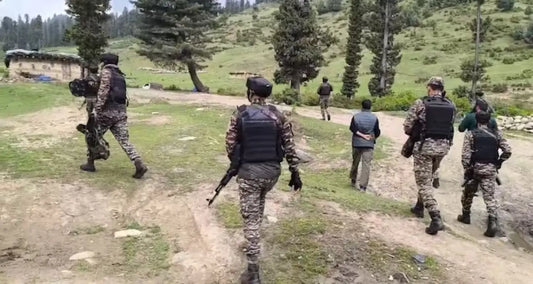Satellite Phone Signal Unravels Lashkar-e-Taiba's Pahalgam Attack Plot

A brief signal from a satellite phone, originating from a prohibited Chinese device, led Indian security forces to the hideout of the Lashkar-e-Taiba (LeT) group responsible for the April 22 Pahalgam terror attack. This discovery initiated a swift counter-terror operation named Operation Mahadev, conducted in the Dachigam forests near Srinagar.
Also Read: Pahalgam Attack Mastermind Suleiman Shah Killed in Operation Mahadev
Military sources reported that a Huawei satellite phone, illegally brought into India, was unintentionally activated last week. The signal was detected by units in Delhi and traced to the Lidwas area in the Dachigam wildlife sanctuary. This precise location enabled the Indian Army’s Chinar Corps, Para Special Forces, CRPF, and Jammu & Kashmir Police to launch a joint operation on Monday morning.
Drone reconnaissance confirmed the presence of three militants hiding in a forest trench. Within 90 minutes of engaging, all three were neutralized. Among them was Hashim Musa, also known as Suleiman Shah, who was believed to be the planner behind the Pahalgam massacre that resulted in 26 civilian casualties.
Operation Mahadev was the culmination of a 14-day intelligence effort, which included intercepted encrypted communications on T82 ultraset radios, satellite geolocation data, and local intelligence. At 2 AM on Monday, the militants reactivated their encrypted communications, allowing Indian signals-intelligence teams to pinpoint their location.
By 8 AM, drones began transmitting images of the Dachigam ridgeline. By 9:30 AM, Rashtriya Rifles and Para SF units had surrounded the Mahadev hill feature. The initial firefight erupted at 11 AM, leading to the immediate elimination of two militants. A third militant was shot while attempting to flee by 11:45 AM. The operation concluded by 12:45 PM with the recovery of bodies and area clearance.
Recovered items included carbine and AK-47 rifles, several rifle grenades, and satellite-navigation devices linked to China’s BeiDou system. Such tools are increasingly used by terrorist groups to evade detection by standard GPS tracking.
Investigations confirmed the use of a Huawei satellite phone connected to the Tiantong-1 network. These devices provide low-bandwidth communications independent of terrestrial infrastructure and feature robust encryption and frequency-hopping capabilities, complicating interception efforts. Experts note that decrypting such signals often requires extensive work and support from allied agencies.
Defence Minister Rajnath Singh praised the successful mission in Parliament, asserting that terrorism would no longer find sanctuary in Kashmir. The Lieutenant Governor of Jammu & Kashmir attributed the strike to enhanced intelligence coordination but acknowledged previous oversights that allowed the April 22 attack to happen.
Security officials suspect that more members of the terror module might still be concealed within the vast Dachigam forest. Ongoing search operations continue in the region.



















